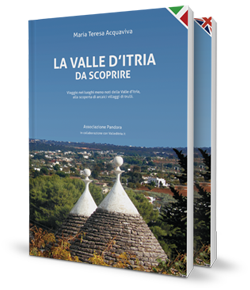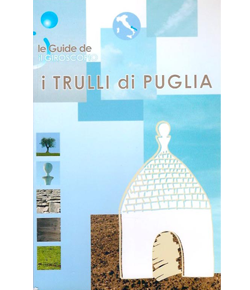Text translated by Google translate.
Cisternino, a natural balcony on the Valle d'Itria.
The origins of Cisternino date back to the 9th century AD when the population of the nearby Adriatic coast fled due to the continuous pirate raids and the spread of malaria. So over time a farm was formed on the hill. The toponym of the city derives from the geographical position of the medieval site that stood on this side, Cis, of Ostuni, Sturnium, the ancient Messapian city. Around the year 1000 a first church was built in the Casale (village), populated and fiefdom of the diocese of Monopoli.
For centuries the city was dominated by two feudal powers, the diocese of Monopoli and various lay feudal lords. But the power of the bishop always prevailed. On the site of the primitive church, the new late Romanesque church was built, on which architectural elements of the Apulian Gothic were added over time. It is the current Mother Church, dedicated to San Nicola di Patara, better known in Puglia as San Nicola di Bari. Next to the church is the other ancient monument of Cisternino, the Torre Grande or Normanna, an ancient symbol of civil power on the which, however, stands the statue of the patron saint Nicola, in memory of a predominant ecclesiastical power.
Under the Angevin and later Aragonese dominations of the Kingdom of Naples, Cisternino was fortified with walls and circular towers. A 19th century painting by the local painter Barnaba Zizzi depicts a large door, facing south-west, which scenically connected the Great Tower to the Mother Church. The door and facade of the church were subsequently demolished in the nineteenth century and the facade of the church was rebuilt in its current neoclassical forms, while a portico was added to the tower. The main street of the historic center still connects the two gates, of which there is only the Porta Piccola, oriented to the north-east. Some towers of the Angevin period are clearly visible, with the typical inclination on the base wall, but above all what intrigues is the labyrinthine arrangement created in the streets of the historic center, typical of the cities of the Murgia.
"A great architectural masterpiece without architects". With this sentence, the Japanese architect Hidenobu Jinnai defined the ancient city of Cisternino, enhancing that popular and Mediterranean architecture which, free from the desire to date buildings, considers them "timeless" because time has overlapped the architectures in a harmonious fusion. The historic center is divided into five districts with curious dialect names, painted on artistic majolica fixed to the walls of the streets. There is l'isule (isola), a neighborhood isolated, in fact, from the streets that surrounded it; scheledde, a neighborhood characterized by curbs that were used to slow down the rhythm of the wagons on the streets; u pantèn (pantano), that is, the quagmire therefore a depressed neighborhood and therefore once a swampy area; u bùrie (borgo) or village, the neighborhood that developed outside the structure of the city walls in the 16th century; finally, bère vecchie (borgo vecchio), or the old village, the oldest and largest neighborhood.










